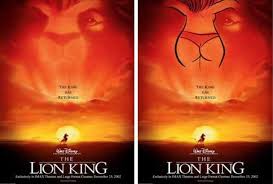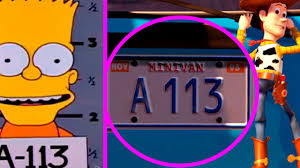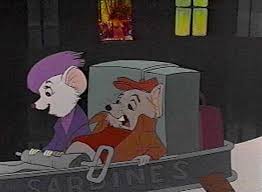Advertisements
In the vast universe of cinema, every scene, every dialogue, and even every silence, carries an intention that goes beyond pure and simple entertainment. Films are full of layers, full of meanings that often go unnoticed by the inattentive eye.
These subliminal messages, when unraveled, reveal social criticism, commentary on the human condition and even predictions about the future. In this space, we will delve into the fascinating world of hidden messages that films present to us, even when we think we are just enjoying a good story.
Advertisements
Throughout this analysis, we will explore examples of acclaimed films that hide true interpretative gems. From classics that revolutionized the film industry to contemporary productions that challenge the status quo, there is a treasure trove of meanings waiting to be discovered.
With a detailed approach, we will uncover what directors, screenwriters and producers have to tell us between the lines of their creations.
Advertisements
Discover how some cinematic works of art use symbolism, color and music to convey powerful messages. Understand how renowned directors use visuals and narrative to make subtle criticisms or provoke deep reflections about our society and culture.
Get ready to see your favorite movies in a new light, noticing nuances that might have gone unnoticed before.
It’s not just about watching a movie, but about experiencing it in a richer and more complete way. By understanding the hidden intentions behind the scenes, the cinematic experience becomes a journey of discovery and learning.
Let's discover together what films really want to tell us, as they involve us in their plots and make us reflect on the world around us. 🎬✨

The Hidden Meaning in Colors
Color is one of the most powerful tools in a filmmaker’s arsenal when it comes to conveying hidden messages. In many films, color is used not only to set the tone and atmosphere, but also to convey emotions and symbolism that dialogue or action cannot directly express. A film’s color palette can be carefully chosen to guide the audience’s perception, highlighting underlying emotions and themes.
Recommended Articles
For example, the use of red in a film can symbolize passion, danger or power, depending on the context in which it is used. In a film like “The Sixth Sense,” red is used to indicate the presence of supernatural elements or moments of transition. Similarly, blue can be used to evoke a sense of calm, sadness or isolation, as in “The Shape of Water,” where the predominance of blue tones accentuates the feeling of melancholy and loneliness.
Additionally, the combination of colors in specific scenes can be indicative of the relationships between characters or the emotional state of a protagonist. Think of Wes Anderson’s “The Grand Budapest Hotel,” where the director uses a vibrant, contrasting palette to highlight the eccentric and often absurd nature of the situations and characters.
The Powerful Symbols of Objects
Objects in a film often carry symbolic weight that goes beyond their practical use. They are elements that, when used cleverly, can add layers of meaning to the narrative, helping to convey hidden messages to the attentive viewer. These objects function as emotional or narrative triggers, connecting events, characters, and themes in subtle but effective ways.
A notable example of this is the spinning top in Christopher Nolan’s Inception. This small object is not only a tool to determine whether the protagonist is in a dream or reality; it also symbolizes the ambiguity of perception and the main character’s internal struggle with sanity. By leaving the final scene open-ended, the film challenges the viewer to question their own reality and perception.
Another example is the use of mirrors, which often represent duality, self-reflection, and illusion. In “Black Swan,” mirrors are used to explore the protagonist’s fragmented identity, representing her internal struggles and the pressure to achieve perfection. At the same time, they amplify the psychological tension, serving as a constant reminder of her fragile mental state.
Revealing Dialogues and Silences
Dialogue and silence in a film are integral parts of the narrative, and often carry hidden messages that go beyond the spoken words. Word choice, tone, and even the pauses between lines can offer clues to the true emotional state of characters or the broader themes of the story. Likewise, silence can be a powerful tool for conveying intense emotion or creating suspense.
In films like “The Social Network,” the fast-paced, sharp dialogue not only advances the plot, but also reveals the complexities of interpersonal relationships and the underlying cynicism of the characters. The subtext is often more important than what is explicitly said, inviting the viewer to read between the lines and discover the true intentions and feelings.
On the other hand, silence can be just as powerful. Think of “No Country for Old Men,” where the use of silence heightens the tension and creates an almost unbearable suspense. Silence is used to highlight critical moments, forcing the audience to focus on the smallest details, such as facial expressions and body language, to understand what is happening.
Elements like sarcasm, metaphors, and irony are also effective tools that filmmakers use to add layers of meaning to dialogue. These techniques allow the audience to perceive the depth and complexity of the narrative, often revealing social criticism or philosophical insights.

The Power of Music and Soundtracks
A film’s music and soundtrack play a crucial role in creating emotional atmospheres and conveying hidden messages. Music is often used to complement visual storytelling, guiding the audience’s emotions and reinforcing underlying themes. A well-chosen soundtrack can transform a scene, heightening its emotional impact and adding depth to the storytelling.
In Alfred Hitchcock’s “Psycho,” the iconic score composed by Bernard Herrmann is a perfect example of how music can heighten suspense and terror. The high, piercing notes of the violin are as central to the shower scene as the images themselves, creating a visceral experience that lingers in the viewer’s memory.
Another example is “The Godfather,” where Nino Rota’s score becomes synonymous with the film itself, evoking a sense of inevitable tragedy and internal conflict. The music acts as a silent narrator, guiding the audience through the emotional highs and lows of the Corleone family saga.
In some cases, the use of popular music can add an additional layer of meaning, often evoking memories or emotions that resonate with the audience on a personal level. The choice of a specific song can provide clues about the time period in which the story is set or reflect a character’s emotional state at a critical moment.
Music and soundtrack are therefore essential tools that filmmakers use to enrich the narrative, creating an auditory experience that complements and expands the visual story.
Recurring Themes and Visual Metaphors
The use of recurring themes and visual metaphors is a technique often employed to convey deeper messages in films. These elements act as invisible threads that tie the narrative together, offering the audience clues as to the underlying meaning of the story. Skilled filmmakers know how to weave these metaphors together in ways that enrich the viewer’s experience, often challenging them to interpret and uncover hidden layers of meaning.
A classic example is “Blade Runner,” where the constant presence of rain and darkness not only establishes the dystopian atmosphere, but also symbolizes the hopelessness and decay of humanity. These visual elements create a backdrop for exploring philosophical questions about identity and the nature of humanity.
In “Pan’s Labyrinth,” Guillermo del Toro uses the fantasy world as a metaphor for the horrors of war and the struggle for innocence in times of conflict. The magical creatures and challenges faced by protagonist Ofelia represent her attempts to escape the brutal reality, offering an additional layer of meaning for the audience to unravel.
These themes and metaphors not only enrich the narrative, but also encourage the audience to reflect on the broader implications of the story. They create a richer cinematic experience, where each scene can be reinterpreted in light of new information or insights, offering renewed pleasure with each viewing.
The Impact of Space and Setting
The spaces and settings in a film are more than just backdrops for the action. They are carefully chosen to convey hidden messages, reflect the emotional state of the characters, and emphasize central themes of the narrative. Architecture and production design can act as characters in their own right, influencing the tone and atmosphere of the film.
In Spike Jonze’s “Her,” the minimalist, futuristic set design reflects the isolation and emotional disconnection experienced by the protagonist. The clean, modern architecture mirrors the quest for intimacy in an increasingly digital world where technology stands between human connections.
Stanley Kubrick’s film “The Shining” is another example of how space can heighten a narrative. The Overlook Hotel, with its long corridors and labyrinthine decor, creates a sense of claustrophobia and mounting tension. The hotel becomes a visual metaphor for the protagonist’s downward spiral into madness, amplifying the suspense and psychological horror.
Filmmakers also use contrast between different environments to underscore character development or changes in the narrative. For example, in David Lynch's “Murders City,” the transition between dreamlike and realistic settings reflects the complexity of the plot and the ambiguity of perception.
Cultural and Historical References
Cultural and historical references in films are an effective way to convey hidden messages and add layers of depth to a narrative. By incorporating real-world elements, filmmakers create a connection between fiction and reality, inviting the audience to reflect on the broader implications of the story. These references can be direct or subtle, but they always provide an entry point for interpretation and analysis.
In “Inglourious Basterds,” Quentin Tarantino uses historical references to subvert expectations and rewrite the narrative of World War II. By altering historical events, the film invites audiences to consider issues of revenge, justice, and morality in a new light. Cultural references, such as homages to classic cinema, also enrich the experience, providing additional layers of meaning for those familiar with the source material.
Another example is “Black Panther,” where references to African culture and the Afro-descendant diaspora are interwoven into the narrative to explore themes of identity, colonialism, and resistance. The film not only entertains, but also provokes discussions on contemporary social and political issues, expanding its cultural impact.
Cultural and historical references therefore serve as a powerful means of storytelling, offering filmmakers the opportunity to comment on the real world while engaging audiences in a fictional narrative. They allow films to resonate on a deeper level, offering a rich, multifaceted experience that transcends pure entertainment.
The Magic of Easter Eggs
Easter eggs are small secrets or hidden messages that filmmakers insert into their films as a way to reward attentive viewers. These elements are usually subtle and often go unnoticed on first viewing, but when discovered, they add an extra layer of enjoyment and understanding to the cinematic experience. They can be references to previous works, inside jokes, or clues about the plot.
In the Marvel Cinematic Universe, Easter eggs abound, serving as connections between films and creating a sense of cohesion within the vast universe. From references to classic comics to hints at future films, these details enrich the experience for dedicated fans, who delight in spotting each new discovery.
Another iconic example is the inclusion of “Core 1138” in almost every George Lucas film, a tribute to his student film “THX 1138.” This little signature has become a trademark, challenging fans to find it in each new work.
Easter eggs aren't just for fun; they can also serve as storytelling tools, offering clues about future developments in the narrative or exploring themes in a more subtle way. By discovering these elements, audiences are encouraged to revisit the film, reinterpret scenes and appreciate the detailed work of the filmmakers, making the cinematic experience more interactive and immersive.

Conclusion
Uncovering hidden messages in films is like opening a window into the inner world of the creators. Often, what’s on the surface is just the tip of the iceberg. Filmmakers often use symbolism, metaphors, and subtext to convey complex ideas that may not be immediately apparent to the viewer. 🧐
For example, through the use of specific colors, camera angles, and music, a film can evoke emotions and thoughts that resonate on a subconscious level. This allows viewers to connect with the narrative on a deeper level, even if they are not consciously aware of it. Furthermore, universal themes such as love, fear, and hope are interwoven into stories that reflect the human condition, offering us valuable lessons without us even being fully aware of them.
By understanding these subtle messages, we can enrich our cinematic experience and expand our understanding of the world. So next time you watch a movie, be aware




